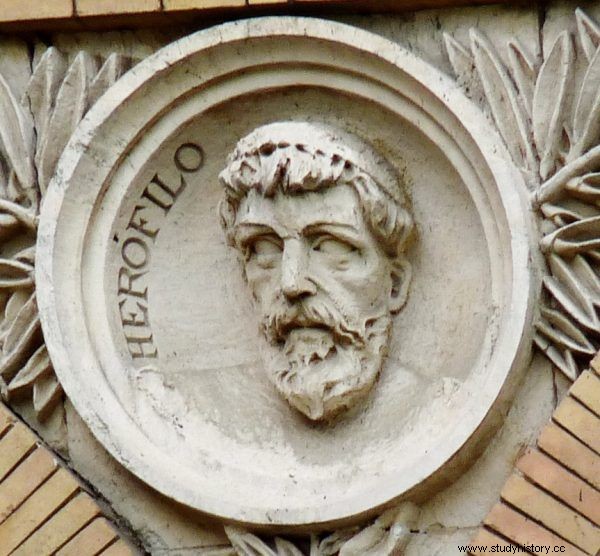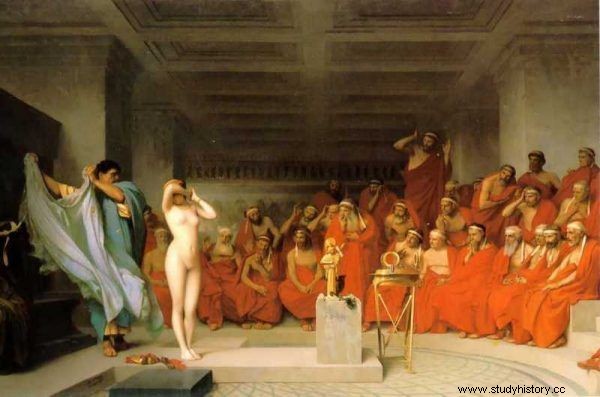They lived in a world dominated by men. The gentlemen did not allow them to fulfill themselves professionally, even when it was about saving the lives of other women. Thanks to their determination and ingenuity, they broke down barriers. But the beginnings weren't easy at all ...
In ancient Greece, women were not only deprived of their citizenship and voting rights. They also couldn't take care of pregnant women. Men knew everything better - even how to bear children.
Already the pioneer of medicine, Hippocrates, who lived in the 5th century BCE, banned women from entering his school on the island of Kos. However, he allowed them to learn obstetrics in Asia Minor. After his death, the Greeks forbade all ladies from medical practice under the penalty of killing them.
They believed that women midwives specialize in abortions. They recognized it as their duty to deliver them. And because pregnant women were afraid to leave their health in men's hands, the perinatal mortality increased.
A rebel on a mission
She rebelled against such treatment at the turn of the 4th and 3rd centuries BCE. Agnodike, a beautiful, well-born and semi-mythical Athena. The girl cut her long hair and dressed in a loose tunic began to pretend to be a young adept of medicine. She studied with Herophilus of Chalcedon, an eminent expert in anatomy, who lectured in Alexandria. She did not arouse any suspicions and quickly got an education.

Herophilos did not even realize that a talented student is really ... a student. Relief from the Medical Faculty of the University of Zaragoza showing Herofilos (photo:Ecelan, license CC BY-SA 3.0 es).
However, when it came to starting the practice, the Athenians did not want to use the help of a young medic. They preferred to give birth on their own rather than rely on a boy with no experience. Agnodike found a way too. When the skeptical ladies tried to shake her off, she opened her tunic, revealing her identity to them.
The news spread quickly among the women. Soon Agnodike had her hands full. And the medics couldn't understand how the rookie had gained so many patients. They began to accuse the young and smooth-faced "friend" of debauchery and even rape. If the women preferred his services, they reasoned, they must have benefited from non-medical benefits. Agnodike accused of depravity faced the Areopagus. It was her entire line of defense to shed her clothes .
Confused members of the tribunal did not know what to do with the girl. They thought about the death penalty or exile. However, they did not take into account the strength of female determination. Agnodike's patients massively protested, shouting:
You are not caring husbands, but enemies! For here she has found a way to save us and you are condemning her!
The ladies also threatened to kill themselves and to treat any man entering their rooms as an enemy should Agnodike be convicted. Under pressure from wives, mothers and daughters, the judges released the girl . Moreover, all free-born Greek women were now allowed to explore obstetrics.
How much truth in this story?
We get to know the history of Agnodike thanks to the Roman writer Gaius Julius Hyginus, who lived in the times of Julius Caesar and Octavian Augustus. Hyginus wrote down many Greek tales and collected them in his work "Fabulae". Among them was also the one about the beautiful and brave Agnodike, a pioneer in obstetrics.
The anecdotal nature of the Agnodike story has led modern researchers to see this midwife as a mythical figure rather than a flesh-and-blood woman. Especially since her name literally means "clean before justice" . This suspicion would fit well with the content of the story. Its appearance in Hyginus's work indicates that the problem of women's access to female medical care was alive even 400 years after the mythical Agnodike.

To defend herself against the accusation of corrupting patients, Agnodike decided that instead of confusing in testimony, it was better ... to throw off her clothes. Painting by Jean-Léon Gérôme "Fryne before the Areopagus" from 1861 (source:public domain).
The story of her perfectly illustrates the gap between men and women in access to medical knowledge. The fate of the Athenian girl has become a convenient precedent for women fighting over the centuries for access to medical practice . Her example was especially popular after 1687, when "Fabulae" was translated into English.
Agnodike's heroism was an argument in the struggle of nineteenth-century Victorian ladies who demanded the care of female gynecologists. To this day, this story serves as a defense against male domination in this profession.
Finally, it is worth mentioning that at the end of the 19th century, German archaeologists discovered Greek figurines of women with their tunics upturned on the Mediterranean Sea, revealing their wombs. Is there something more to Agnodike's story than it seems?
